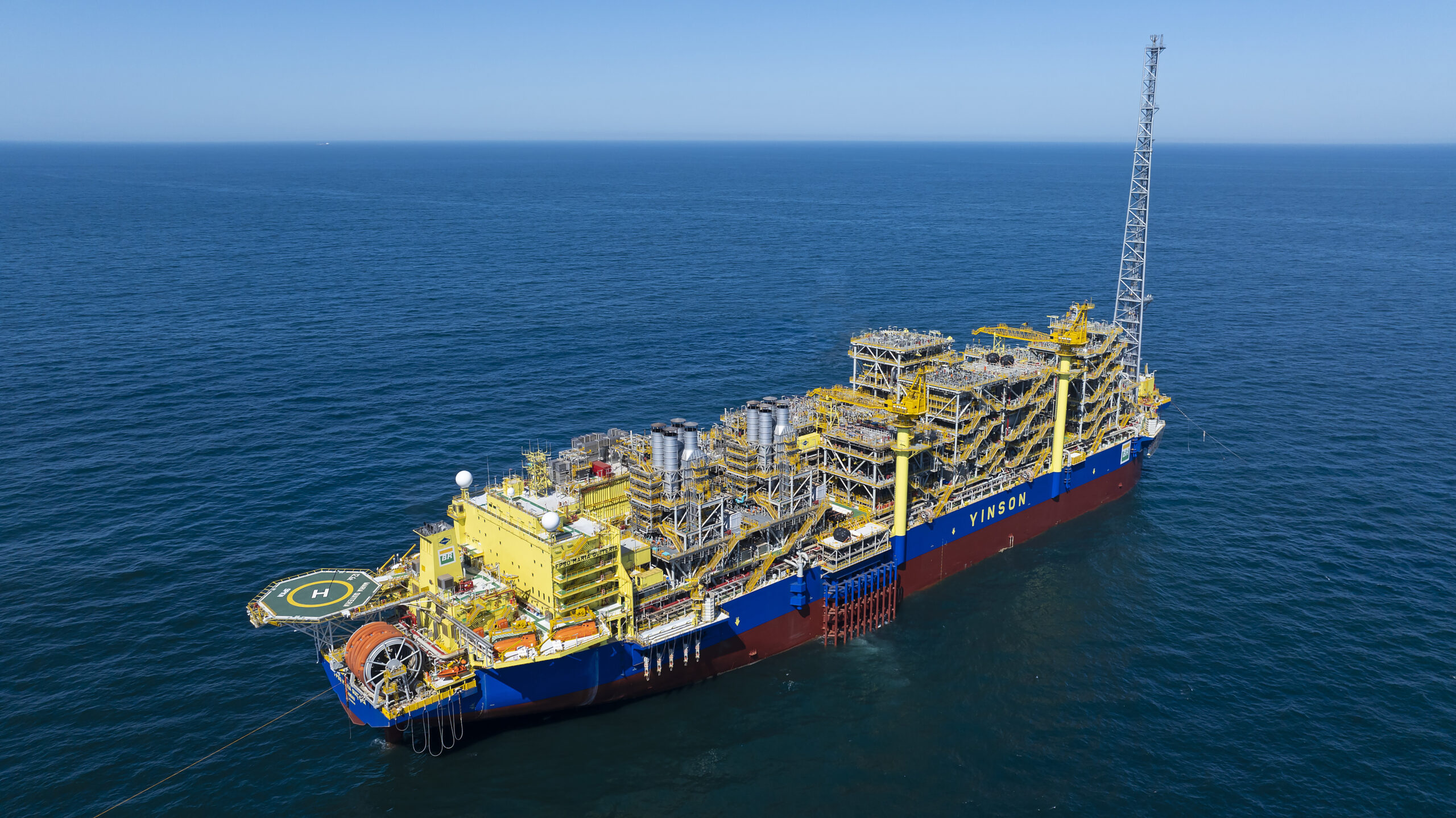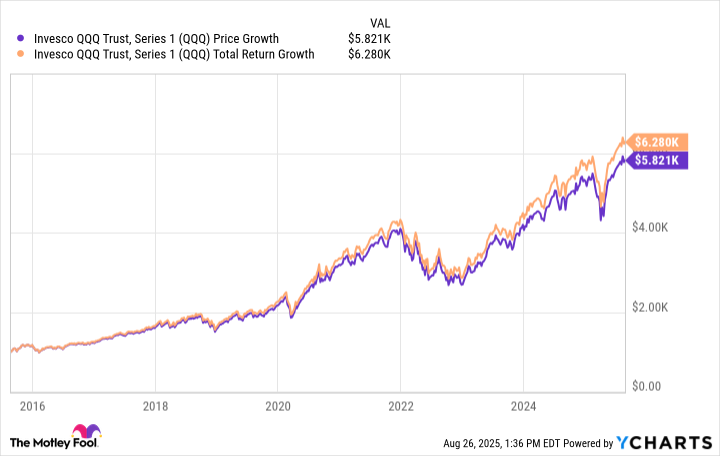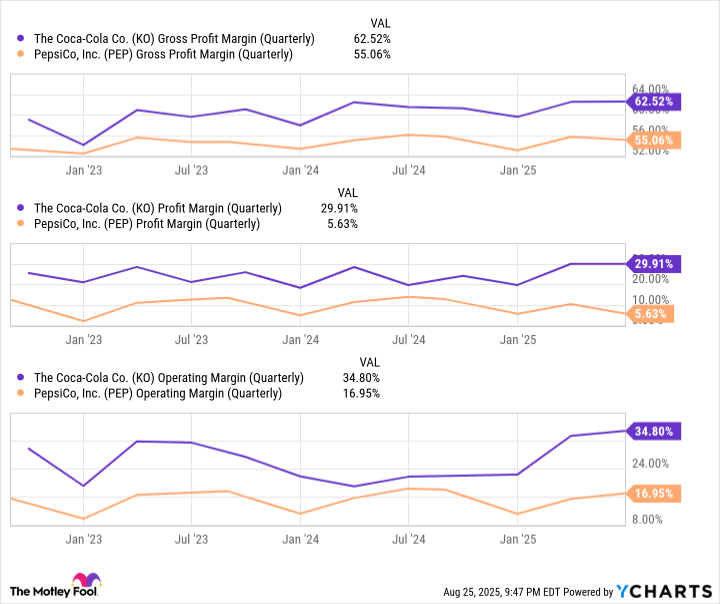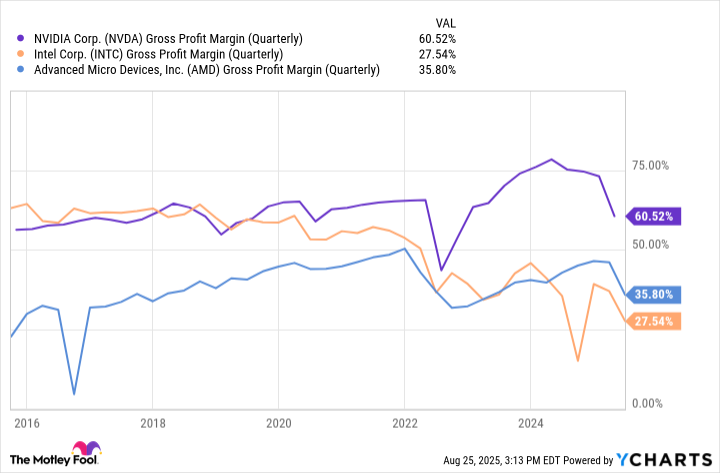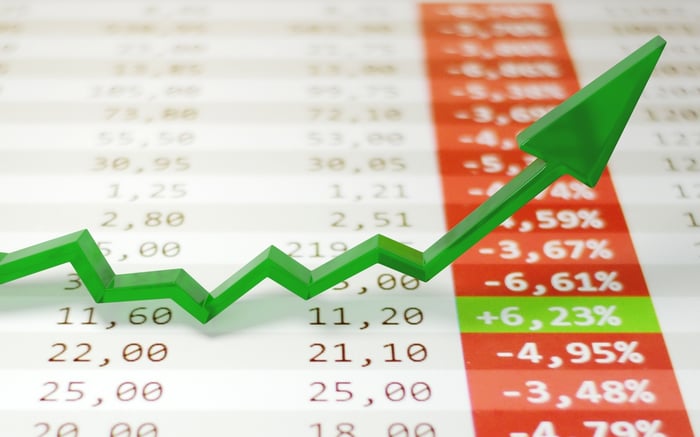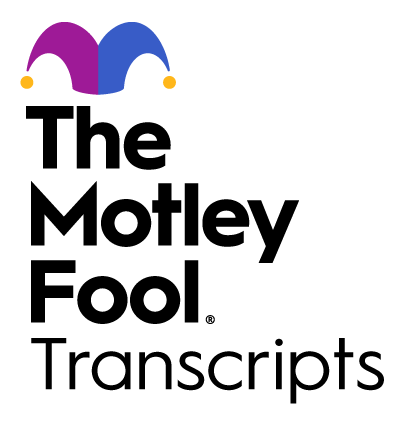
Image source: The Motley Fool.
DATE
Thursday, August 28, 2025 at 5 p.m. ET
CALL PARTICIPANTS
Chief Executive Officer — Max Levchin
Chief Financial Officer — Michael Linford
SVP, Investor Relations — Zane Keller
SVP, Finance — Rob O’Hare
Need a quote from a Motley Fool analyst? Email [email protected]
TAKEAWAYS
Record Quarterly Performance—Affirm Holdings(AFRM 3.08%) reported new records for most key operational and financial metrics, which management noted is unusual for a fiscal fourth quarter ended June 30, 2025, outside the normal seasonal peak.
Repeat Borrower Rate— 95% of transactions in the fiscal fourth quarter ended June 30, 2025, were from repeat borrowers, indicating high platform engagement.
0% APR First-Time User Penetration— Approximately 50% of first-time users in the most recent quarter originated on 0% APR products, with these users exhibiting repeat usage patterns similar to the broader user base.
Conversion from 0% to Interest-Bearing— Customers who initially use 0% APR loans convert to interest-bearing products, according to management, providing incremental future revenue streams.
Merchant Adoption of 0% APR— The number of merchants subsidizing 0% APR loans doubled year over year.
Funding Capacity Growth— Funding capacity grew by approximately 55% year over year, as Affirm secured additional “blue chip” capital partners focused on long-term relationships.
Affirm Card Metrics— Card annualized GMV reached $1.2 billion and the attach rate reached 10%, with trailing 12-month average GMV per cardholder rising from $3,500 to $4,700 for the period ended June 30, 2025.
AI-Powered Adaptive Checkout (Adapt AI)— Adapt AI deployment led to an average 5% increase in GMV for participating merchants by optimizing financing offers at checkout.
International Expansion Progress— Initial “friends and family” testing has begun in the UK in partnership with Shopify, with early results showing higher interest-bearing product mix.
Enterprise Merchant Relationship Wind-Down— Guidance assumes integration with a significant enterprise partner will be fully concluded in the second quarter of fiscal 2026, with zero volume expected thereafter.
Revenue Less Transaction Cost (RLTC) Outlook— Management expects the RLTC take rate to remain at the high end of the targeted 3%-4% range based on current product mix trends.
SUMMARY
Management confirmed accelerated growth across core metrics in the fiscal fourth quarter ended June 30, 2025, and significant expansion of the 0% APR product among both users and merchants. Repeat engagement climbed, with a substantial proportion of total volume attributed to returning customers. Funding capacity grew by approximately 55% year over year and deepening long-term partnerships with leading asset managers. Innovative AI deployments, notably Adapt AI, demonstrated measurable uplift in merchant sales conversion. International entry is underway via UK pilots, supported by the Shopify channel, signaling future additional geographic moves.
Max Levchin said, “our growth is accelerating, and we are firing on old pistons.”
Michael Linford said, “a one-point move in reference rates should translate to about a 40 bps change in our funding cost,” with impacts flowing through gradually given portfolio duration.
The company highlighted that 0% APR loans remain “still profitable” for Affirm despite lower margins, as they convert users to more lucrative products over time.
Affirm indicated no anticipated impact to its underwriting standards or credit controls despite an increasingly competitive funding and lending landscape.
INDUSTRY GLOSSARY
GMV (Gross Merchandise Volume): The total dollar value of transactions processed on the Affirm platform within a period.
RLTC (Revenue Less Transaction Cost): A profitability metric defined as revenue net of direct transaction costs, used by Affirm to track unit economics.
Attach Rate: The proportion of total eligible transactions in which a specific product, such as the Affirm card, is used.
Adaptive Checkout / Adapt AI: Affirm’s proprietary checkout flow enhanced by machine learning, which customizes financing offers for each consumer to optimize conversion and merchant economics.
0% APR Product: A loan or installment financing offer provided at zero interest to the consumer, typically subsidized by participating merchants.
Repeat Borrower Rate: The percentage of total transactions originated by customers who have previously borrowed through the Affirm platform.
Full Conference Call Transcript
Max Levchin: Thank you, Zane. The results, which I do think are exceptionally strong, is all the explaining we need to do. So just one tidbit. Left on a cutting room floor. That we didn’t just crush this quarter. We actually set a new record most of our metrics, which is unusual fiscal Q2 is a normal peak, but this is Q4, and, yep, it is the record. So that’s really cool. Tell you that our growth is accelerating, and we are firing on old pistons. Also, we just celebrated Libor’s decade at a firm a few months ago, and so I want to Michael on his seven years here as of yesterday. And Rob’s upcoming fifth anniversary this Sunday.
Privilege to lead an extremely talented and dedicated team, and I don’t take for granted that they and their families are willing to put up with my antics for so many years. Thank you guys, and here’s to many more years of building a firm together. Back to you, Zane.
Zane Keller: Okay. Great. Thank you, Max. With that, we’ll now take your questions. Operator, please open the line for our first question.
Operator: Great. We will now be conducting a question and answer session. If you would like to ask a question, please press 1 on your telephone keypad. Confirmation tone will indicate that your line is in the question queue. You may press 2 to remove yourself from the queue. For participants using speaker equipment, it may be necessary to pick up the handset before pressing the star keys. One moment while we poll for questions.
Dan Dolev: And our first question comes from the line of Dan Dolev with Mizuho. Please proceed with your question.
Dan Dolev: Hey, guys. Max, Rob, Michael. Great results as always. So obviously, really strong quarter, amazing guide for next year. It sounds like last quarter, you were talking a little bit about the potential stress and the impact on the firm. It sounds like things have gotten a little better for you from when you reported last time to now. And it has what is, you know, what is your best take on how things stand now and what are the reasons for that optimism? Again, really strong stuff. Very good.
Max Levchin: Thank you, Hans. You know, as Michael loves to say, we take our guidance very seriously and on the side of being thoughtful and, aiming to, get ourselves some a pluses. Instead of just straight a’s. And, we typically, do deliver. Not a forward-looking statement. But you know, from the consumer point of view, which I gather was the question we think that it continues to perform. It’s really maybe a commentary on how strong the momentum is in The US and to at least similar degree Canadian consumer. And, soon, we’ll find out that looks like for UK one. But we’re feeling very good about the originations we’re driving.
We feel quite excellent about our ability to get paid back on time. So the credit side of the equation, continues to perform really well. On the demand for our service, you see the acceleration in GMV and the, new record in that sense. It off calendar, if you will, is also a reflection of the fact that folks are using Affirm for more and more things.
Dan Dolev: Thank you. Great stuff again. Thank you. And our next question comes from the line of Dan Perlin with RBC Capital Markets. Please proceed with your question.
Dan Perlin: Thanks. Good evening, everyone. So I want to go back to the 0% APRs with the first-time users coming in. I think you said that was, like, 50% Mhmm. Which is, again, like, a very, very strong number. So the question is it’s bringing in a lot of new users. I’m wondering when you look at kinda prior quarters, obviously, you can’t look at it this quarter, but prior quarters, what kind of, like, repeat rates are you able to, I guess, glean from those initial users coming in? And the real crux of the question is, are they coming on the platform because of 0% APR, but they’re not using it again?
Or are they behaving similar to maybe more traditional firm user? Thank you. It’s a great question. I appreciate the implied dig at how real are these growth users, but I have good news on that front. They do repeat. Obviously, every credit strata behaves a little bit differently in a sense that folks choose us more or less depending on what alternatives they have, how they feel about the merchant coverage or the deal covers that they want.
But generally speaking, there’s not a tremendous difference in terms of repeat of users that have been acquired through zeros or not, But the more interesting thing, which you didn’t ask, but I’m gonna answer anyway, is do zero users flip over to interest bearing? And they do. And that’s, I think, is a really, really important indicator. Obviously, 0% transactions are somewhat less profitable for us. They’re still profitable, so this is not a loss leader. But the interest income that comes in interest-bearing loans, is obviously more profitable, and those folks enjoy zeros when they are available to them.
But experience using Affirm is so positive, they do convert to interest-bearing users just fine and, come back to us for many other things than just zeros. That’s great. I figured I’d sort of dig in early. So thanks. Oh, yeah. That’s a good it’s I when I was reading her numbers, like, you know, what would I stick my finger and be like, how good is that? And this is a good one to ask. Yeah. And the answer positive. Awesome. Yeah. That’s fantastic. Thank you. Have a good one.
Adam Frisch: Thank you. And our next question comes from the line of Adam Frisch with Evercore ISI. Please proceed with your question.
Adam Frisch: Hey, guys. Good afternoon. It seems like you guys are just Max, I’ll quote you. You guys are crushing it. The only thing I could see kinda derailing the story is what’s going on with the consumer. And if you expect things like the resumption of college loans and so forth, maybe the data around consumers gets a little dicier in the next couple months into the end of the year. Could you just remind us where you are in your spectrum of the folks that use your platform, where they are on the FICO scores relatively, like, how many of your transactions are with consumers that are near prime, prime, or super prime?
So when the data inevitably comes out, the consumer might be getting a little shakier, we have someone to fall back on in terms of the quality of the folks engaging. With Affirm. Thank you.
Max Levchin: I don’t know if it’s gonna come out any sooner than right now. It’s all our supplements, I think. But generally speaking, student loan repayment resumption is something that we’ve all been aware of. Of for quite some time and have definitely taken measures to make sure we are not overextending that borrower and also monitoring how that is going for them. And so it the reason or the fact that we don’t give or didn’t give an enormous amount of attention to the credit performance in this particular letter, isn’t because we forgot. It’s because it’s been highly consistent and con perform really well.
But it also doesn’t mean we’ve taken our eyes off The sort of the thing that we kept on repeating for years and years is that credit is job number one. It still is. The team still gets the executive team still gets a full credit performance update every single Monday. And anytime the disturbance in the force we move that from once a week to three times a week and you know, daily if that’s that warrants it. And so we are very, very mindful of threat performance. Are not even a little bit asleep with the switch. The numbers you see are there exactly because we want them to be there. Set a many times before.
Credit performance is an output of our settings of the models that we run. You know, not sure to belabor the obvious, but we underwrite every single transaction, and there’s reserve the right to decline transactions we feel are too risky for the end borrower and for Affirm, and we do. And if there’s ever a deviation from our normally, extraordinarily high net promoter scores because not everybody enjoys hearing, hey. You shouldn’t borrow. You’re overextended. But we won’t change our point of view on their ability to borrow and our willingness to lend if they are in fact overextended, be it with a firm or overall in their credit utilization. So no, I’m not concerned about that.
Obviously, macroeconomic shifts are a thing that happens to everybody at the same time. That’s not a thing we control, but we can control our results and have controlled the results for years and years as the macroeconomic environment moved up and down, sometimes pretty suddenly.
So I feel very good about our performance, feel good more importantly, in our ability to control that performance so long as we keep our eyes on the credit numbers, and we certainly And I would just add that I think given the short duration of the loans that we’re originating, the most important things for us is that we have a full picture of the borrower’s wherewithal to repay the loan at the time of origination. And then the asset is so short-dated and we’re increasingly working with consumers that we’ve seen before. 95% of our transactions came from repeat borrowers this quarter.
So that setup really allows us to focus on underwriting the consumer here today where they are and making sure that we’re instrumented to catch changes in the future, but we don’t really stare at those problems in advance. I think we’re really focused on making sure that the cohorts that we originate today pay us back. And if we need to adjust the underwriting, you know, to be more inclusive or less inclusive in the future, we’ll we’ll do that. In normal course.
Will Nance: Thank you. And our next question comes from the line of Will Nance. With Goldman Sachs. Please proceed with your question.
Will Nance: Guys. Thanks for taking the questions. Nice results today as always. Wanted to ask a question just on the funding environment. Max, we’ve continued to see the capital markets be wide open for consumer lenders. Like your funding capacity was up roughly 55% year over year, utilization is way down. We’ve also seen that in pretty much every other lender in the space. With the rise of kind of alternative credit coming into the space. How do you think about the incentives that this creates in the market and, like, the risk of credit issues that result from more of an oversupply of funding from of the lower quality competitors in the space.
Or, you know, people who are kind of flush with funding and haven’t have kind of incentives to make a lot of loans because of that. Thanks.
Michael Linford: I can start and Max can add like, I don’t know the way I can really speak to the people in the in the broader ecosystem. I know that we are really mindful of the health of the capital markets when we think about picking our partners. As important that we pick capital partners who we think are going to be our partners for the long term and not just worrying about who’s the lowest bid today. And as a result, we partner with what we think is the blue chips of these asset managers.
And that can come in the form of large strategic partnerships, with world-class investors like Sixth Street or very good insurance asset managers up and down our stack. That’s not an accident. We think really long and hard about picking the partners who we think are gonna be, committed and long term with us. And therefore, we don’t move too quickly either. We don’t pivot out of a strategy. We think in the better part of decade increments. So we’re not so concerned with, what those partners do because they’re obviously thinking about the problem, in the right way. I will say the conditions are very favorable as you pointed out, and that’s to our to our benefit.
We’re really mindful of that, and I think that’s part of the reason why the execution is so good right now.
Moshe Orenbuch: Thank you. And our next question comes from the line of Moshe Orenbuch with TD Cowen. Please proceed with your question.
Moshe Orenbuch: Thanks. Thanks very much for taking my question. I was hoping we could talk a little bit about the Affirm card. You gave some statistics, you know, talk about it being a billion 2 volume, a 10% attach rate. And also that the 0% volume on the card kinda tripled you just talk a little bit about, you know, the current strategy with respect to the card, how you think it’s gonna you know, impact the firm’s customers and volume going forward, and maybe is there any special significance to the 0% of that product?
Max Levchin: Yeah. Try to parse all the really cool threads to pull on here. Actually, cars are growing really well. So the meaning of the update for the avoidance of doubt was it’s kicking ass and taking names, and we’re very proud of it. And we got a lot more to go before we think it might change. The percent attach rate is just a number. We’re we’ll celebrate more when it increases. The strategy with the card, I learned the hard way that I’m not gonna front run what’s next for it. But it is an extremely active area of investment for us. So we have more coming more things coming. Some really we think, yeah.
It incrementally powerful boosters to this particular rocket are on the way. So we’re pretty excited about what’s to come there. I will not pronounce them now. But you know, I’m I’m still spending a lot of my time figuring out how to make the card even more compelling. You can see a little bit about the offline category growth. In the update, I think, and that sort of speaks to the fact that we are learning how to offer it in the right way to the consumer so that they remember to take it with them to places where they haven’t used for EG, a gas station, which is just not a thing you can integrate you know, online.
In terms of zeros on the card, it’s actually a more than anything an amazing surprise and delight. And frequency driver. So if you remember last call, we said that the really ambitious version of the card gets us to 10,000,000 card the vision version of the card future is 10,000,000 cardholders active and, something along the lines of 7,500 plus. Transaction GMV per year. The current trailing twelve months of the cardholder is about $4,700. So think the last time we dropped this number, it was along the lines of 3,500. This is across all Affirm services. So this is card and all the other places where you might go with CART. Dominates.
That’s been, obviously, The only way he’s So we’re not quite at the 7,500, but we’re more than halfway there. And so like, there are many things that are coming together to make sure the card is the best expression. Of the firm. So just as far as I think I wanna go right now, we’re kinda long-winded on this one. But there’s a lot to do, and there’s some unexpected things that are coming soon.
Rob Wildhack: Thanks very much. And our next question comes from the line of Rob Wildhack. With Autonomous Research. Please proceed with your question.
Rob Wildhack: Hey, guys. You know, you’ve been extolling the virtues of the 0% APR product for several quarters now. I mean, as far as I can tell, we haven’t really seen your peers lean into that product in the same way. I appreciate that you’re not them, but even so, like, why do you think that is? Why has no one else be it fintech or legacy, gone into the 0% APRs with the same kinda vigor that you have?
Max Levchin: Because underwriting is hard. And we’re good at it, and others aren’t. So couple of things. First of all, I mean to come off of quite so arrogant, but we do think that this is a difficult thing to do, and we spent a long time being good at it. And plenty of internal consternation. Every time we look at a model and ask ourselves, is this a good idea or a bad idea, It’s not just cool. Let’s give people promotional rates. It’s gonna be amazing. If you remember, our zeros are real zeros. It’s in the letter as well, but, we don’t do deferred interest.
We don’t charge fees, which means that if it’s zero, consumer really does pay nothing above sticker. That means the transaction has to be profitable strictly through merchant subsidies. Which is a thing to negotiate in a custom contract and a lot of control services that you have to offer to the merchant because they need the ability to turn it on and off if they don’t have the margin to do it forever, and we have to have the support infrastructure internally to guide them through such campaigns. Do you wanna do zeros? During this holiday period but not? And you have to do it in a way that compliant with fair lending laws.
Because if you start doing things that are a little too creative, you might end up discriminating advertently against the group that should not be discriminated against. And you’re not just doing zeros. Zeros are easier in a sense that at least you know it’s a 0% loan. But for a large swath of consumers, actually, five ninety-nine APR is extraordinarily compelling. It’s way better than anything else they could get. And so when I see 0% in the letter, what we really mean here is consumers get the benefit of reduced APRs as merchants subsidize them.
And doing that in real-time price to perform on the credit side, on a capital market side because these loans are purchased downstream by people who expect yields that are strong whatever the deal the consumer got. Making sure that these are truly incredible for merchants. It’s a massive multivariate problem, and we love math here more than just about anything else. I think most of our competitors just don’t. And, that’s our strength. Our advantage is we you know, live better through mathematics.
Rob Wildhack: It’s helpful. Thanks. And just quick on the guidance, in the comment that the enterprise merchant will transition off in the fiscal second quarter. It’s kind of an important time with the holiday season. So a little in the weeds, but do you think that happens at the end or the beginning of that quarter? I guess I’m asking if you’re gonna get the holiday spend there or not.
Max Levchin: The assumption in our outlook, Rob, is that enterprise partner is wound down Please proceed with your question. Great. Good afternoon, guys. Nice results. Thanks for taking the questions. I want to touch on the outlook and the take rate. It looks like it’s going to be kind of fairly stable with at least the run rated four q level. I guess, does that imply that the mix the product mix that we saw in the fourth quarter should be fairly steady or are there any other you know, take rate impacts that we should be mindful of? Like, for example, with the enterprise partner or anything that might influence some of these numbers as well. Yeah.
We stopped short of guiding to mix specifically, but as you saw this quarter, monthly 0% loans were growing north of 90 year on year. So we would expect that loan product in particular continues to take a bit of share within our mix. But, otherwise, you know, I think most important thing for us is that the units we’re creating are profitable and that we have a funding plan and a mixed plan that allows us to sort of stay in that 3% to 4% RLTC range and with the guide, we’re expecting to be at the very, very high end of that range from a revenue less transaction cost take rate perspective. Okay. That’s really helpful.
And then I guess just a follow-up following up on Will’s question around funding. I want to ask are you guys seeing, just given that the funding environment is the best, it’s been in quite some time, have you guys seen any, like, uptick in competition or like, irrational players that might be kinda spoiling the water. And I guess, like, it’s so how are you guys kind of dealing with that and continuing to grow while maintaining really solid credit. Yeah. For us, the crawl the quality of the credit isn’t a isn’t really a decision It’s it’s something we constrain the business with. Then we operate from that point. And that’s not lost on our capital partners.
Again, I think the reason why what I consider to be the best investors in the world wanna partner with a firm and do is because of that commitment we’ve made operate the business in a certain way. And we’ve done that not just when things are really good. We’ve done that back through all of the turmoil you’ve seen over the past half decade. Our best investors see that. They recognize that, and they’re attracted to it. Again, we think about these things as long term partnerships. Think some of the behavior or concerns that you’re alluding to would exist in people who are looking for just kind of more trade y type relationships, one time y.
And that’s just not how we operate our business. So kinda far away from us. And again, when you think about choosing your partners and we have the luxury of choice given our performance, think about the partners we choose to do business with. Our team is really selective around partners who we know are gonna be thoughtful and not get over their skis and chase anything away from them. Know, I talked to partners, and they share that they, you know, either pursuing opportunity and didn’t get it because they weren’t willing to pay up.
I both of us are happy in those moments because I know that my partner is being disciplined and that discipline will benefit us in the long run. And I think there’s just so much capital to go to work right now that it doesn’t really give me any concern. Great. To hear. Thank you, guys. Nice results.
Andrew Jeffrey: Thank you. And our next question comes from the line of Andrew Jeffrey with William Blair. Please proceed with your question.
Andrew Jeffrey: Hi. This is Adeeb Chaudhary on for Andrew. Thanks for taking our questions. We wanted to ask on the international strategy in The UK, but also in other geos. You might be looking at and kind of the opportunity for a firm to bring its underwriting product to the rest of world. And then secondly, how the mix of GMV might look differently internationally kind of versus Affirm’s core domestic business?
Max Levchin: It’s a great question. Happy to report that we are in friends and family testing in The UK. With our Shopify friends. It’s very exciting. So that’s obviously an enormous potential up of that is not lost on anyone. Obviously, we have merchants that we’ve taken live there and are excited to bring on a few more of our own, but Shopify is just an incredible partner in our growth. And we think we have it for them as well. So that’s coming quite soon. The mix is little hard to tell in the following sense. We know that the market has tremendous appetite for pain three and pain four, which are traditionally zeros.
Because that’s what the majority of the competition does the totality of their business in But we also know that all the major merchants we’ve spoken with are signed have said, what we really need from you guys is longer terms. We want six months, twelve months, which obviously to a large degree, will be interest bearing. So as of right now, I think the mix that we have in The UK is skews more interest bearing than not. As we scale Shopify that is absolutely subject to change just based on what this will do relative to what’s available. So I you know, little too early to make claims.
You know, we are absolutely going to be as mindful and as attentive to credit in The UK as we have in The US and Canada. Like, that’s not an optional thing. Not going to play it fast and lose whatsoever. But we feel very good about our ability to get the data we need to underwrite and, just to achieve the scale we need to make sure that the levers of control are useful. In terms of other geographies, I think we’ve been pretty transparent that we’re not gonna show you a map, but if we drew one, it would look like Europe.
Andrew Jeffrey: Got it. And if I could ask a quick follow-up, can we just get a high-level update on the Apple Pay partnership and if there’s anything kind of incremental to share there? Thanks so much.
Max Levchin: We as is our custom, do not talk about, generally speaking, individual partners, but in particular, we do not talk about all the partnerships in any detail.
John Hecht: Thanks. And our next question comes from the line of John Hecht with Jefferies. Please proceed with your question.
John Hecht: Afternoon, guys. Good quarter. You know? And I’m looking at a globe, and I can’t find anything that looks like Europe other than Europe. So, thank you for that. New Zealand kinda looks like Japan. Sorry. The Question on, I guess, customer engagement. You know, higher frequency of engagements. You know, as a I guess, a customer seasons on the platform, platform, do the dynamics or characteristics of their typical transaction change as they kinda mature?
Max Levchin: That is a really good question. I don’t know if I have a really thoughtful answer for you right now. The theory behind the card and things like Affirm Anywhere and all the other products we’ve built to gain frequency, was largely that we already understood to be a considered purchase helper. If you’re buying a bicycle or a mattress, that’s a once every in a year type purchase. You obviously should use Affirm because you will probably find a great brand sponsored zero or subsidized APR, all that. And so as we added more products, they were always meant to take the AOV down at the average. So we would be useful in more situations more frequent situations.
And that’s generally speaking been the case. Yeah. I think if you track our average ticket, you can sort of see a gentle downtrend even as the frequency increased. Faster than the downtrend for sure. As we sort of grabbed onto more purchases just some with more frequent ones. So that’s sort of the best I got off the cuff. I am sure we can publish something off cycle explaining really happens. But needless to say, we’re very happy with the increased frequency. We’re not super fussy about AOVs. We don’t think it’s our job to make you buy two mattresses.
We’re answering demand that you naturally have versus telling you in any sort of promotional way to buy a mattress, buy another one. And so that means whatever natural average ticket average spend the user has on any unit time that’s what we should have. We’re still ahead of the averages if you look at things like debit cards, which is kind of our primary debit card and credit cards, which are prime primary replacement goods. Or services, you will see that we’re still ahead of them, but we’re coming closer and closer.
And we wanna rest until we are a proper replacement for credit cards, of course, and at that point, our AOV should be roughly the match to them.
John Hecht: Okay. That’s very helpful. And then you guys provided the general framework to think about the impact of rising rates. I mean, the futures curve or the forward curve looks like there’s a high probability of lower rates. So maybe can you guys give us a framework to think about the impact of lower rates on the business?
Michael Linford: Yeah. Great question, John. You know, it should be generally the rough the same rough mechanics that we outlined during the rising rate environment where a one-point move in reference rates should translate to about a 40 bps change in our funding cost. So that should be true whether the rates are going up or down. The other part of the framework that we shared previously just for everyone is that there will take time for those mechanics to play out because a portion of our funding is variable in nature, but the majority of our funding actually is not truly variable and will adjust with the time lag.
So it may take a year or two, or even longer for those rate changes to fully show up in our funding cost and in our platform portfolio base. So there’s nothing to believe. There’s nothing in our agreements with merchants or otherwise that would lead us to believe that we wouldn’t see the same impact of a declining rate environment as a rising rate environment if you’re looking purely at funding costs. I think the question that we make sure we ask internally is if rates are declining, why is that happening? Right?
And there could be offsetting impacts elsewhere in the business, you know, if rates were to decline because unemployment was rising or there was stress on the consumer, obviously, that lead to costs. Elsewhere, in our in our base.
Matt Code: Okay. Thank you very much. Thank you. And our next question comes from the line of Matt Code with Truist Securities. Please proceed with your question.
Matt Code: Hi. Hey, guys. Thanks for taking the question here. Wanted to go back to the 0% topic. But wanted to address it from the merchant side. So you talked about the number of merchants funding this offering double. Doubling year over year. And I believe that’s up to 7% of your total merchant base now. That’s funding the 0% APRs. Curious, like, as we look forward, what you think that penetration rate can get to?
Max Levchin: It should round up to almost a 100. There are and I’m prone to some hyperbole with numbers, and Rob was laughing at me. But the here’s what I really mean by this. So merchants are broadly divided into a handful of categories, but one way to do it is to think of the margin they spend on marketing. My contention is that marketing budget is at least as well spent at the bottom of the funnel as it is at the top. If you’re broadcasting a story why somebody should come shop with you’re frequently doing it in terms of going out of business sale, hopefully not, more like, you know, 20% sale or Christmas sale.
So the sort of sales driven sale driven, consumer acquisition. Is a little bit of a hand grenade approach to trying to make sales. At the very bottom of the funnel or at the product exploration level of the funnel, you can be much more precise. And with our technology such as Adapt AI where we offer consumers the exact or our estimation of exact financing offer that would compel them to buy, is just much cheaper for the merchant. They would spend a lower percentage of their marketing budget if they thought of it this way at the bottom of the funnel.
The adoption curve of these tools, the 0% APR contract, is entirely a function of these merchants’ realizing that the marketing money they’re spending is better spent on such promotions at the bottom of the funnel versus the blanket coverage at the top of the funnel. And every year, we’re just doing slightly better making sure this is convincing. You know, everything from showing the results, and or working with them to test this. Publishing white papers, educating our salespeople, helping them educate their internal, accounting people, etcetera. And so at the limit, I think every single merchant will benefit from these programs. There are merchants whose margins are quite low, naturally.
And they spend very little of the overall GMV marketing themselves, maybe because they’re already at scale, maybe because they just have an alternative distribution model, that will be the last holdout. But generally speaking, this is a more efficient way of driving sales It is apparent to a large enough body of GMV producers that it will eventually trickle down to the rest of the bunch. So that’s my conviction, and I’m standing by it. And every year, we have more and more zeros to show for it. It will, it will keep happening until morale improves.
Matt Code: No. Thanks, Matt. That Anything for that, Rob? Oh, if I could just sneak in a follow-up, Max, you addressed this in the shareholder letter. You touched a lot on AI. Was hoping you could just talk about it on the call here too. Just kinda like how you’re thinking about the future for AgenTek Commerce and Affirm’s role in it.
Max Levchin: It’s in a letter. I try to try to boil it down to be relatively pithy, so you’re tempting me to give the longer form that Michael successfully talked me out of. Putting in, but it the letter speaks to it pretty well. We think that AgenTek Commerce is going to be extremely successful for some categories of transactions. It may not be super successful for all of them, Many transactions require final human approval just because they have to do with taste. Kind of the unstated weakness of today’s state of AI. Is it’s fundamentally taste free. It doesn’t know what’s beautiful. Certainly, it doesn’t know what’s beautiful to you.
A lot of purchases are made with taste as the front and center of the y. But the need to finance beautiful things or things that you require isn’t going away. So, inherently, we will be in those transactions just like we have been able to find our way into all the other ones. The thing that’s compelling for us about AgenTek Commerce in particular it’s fundamentally a rehashing or remixing of ecommerce as it exists. Before AI. Like, you can imagine you know, the conversation about universal carts has been around forever. No one’s ever really built the universal cart of any kind of scale. Universal shopping cart is very much what’s going to happen inside these chatbots.
If you are to close these transactions from multiple brands, multiple stores, multiple warehouses, in the same chat session. So this idea of remixing ecommerce is what I think successful certainly successful first act, maybe all the act of agenda commerce looks like. We are built to be mixed into all environments. Do you see us pop up in places like shop pay installments, which is a really deep integration? We are a component of someone else’s wallet. You see us inside Chrome Autofill, which is a completely different integration. But not actually very different from our point of view because our services work in that environment. Very different environment, very similar integration.
Almost identical consumer experience as far as Affirm is concerned. You will see versions of this in Agenda Commerce as that rolls out as well. And we’re pretty excited about it. I don’t I’m generally a techno optimist, so you should be careful what you sort of believe with my sort of rose-colored glasses on, but I don’t think it’s going to cannibalize commerce a fundamental level. I think it’s actually going to increase volume for a lot of merchants. I think we will find that some things are still going to be purchased the old way, and other things are just gonna become naturally more obvious inside of the assisted or assistance driven transactions.
And we’re gonna be for here for all of this.
James Faucette: Really helpful. Thank you. Thank you. And our next question comes from the line of James Faucette. With Morgan Stanley Investment Management. Please proceed with your question.
James Faucette: Hey. Good afternoon, everybody. Wanted to ask on the PSP integration Pretty interesting announcement of BNPL with Stripe terminal. I think we there’s potential for that to or similar type announcements to be made with other payment service providers. I’d be curious if there’s any framing you would provide in terms of how important think the PSP channel will be for your business, particularly when we think about the business overall excluding Amazon and Shopify as a way to add additional merchants? And how do you intend to lean into that channel etcetera? Good question.
Max Levchin: Generally speaking, offline is still kind of the greenfield of buy now, pay later. The fraction of online to offline is still whatever it is these days. 10 to one eight to one. So there’s a lot more there than inside ecommerce, and, yeah, binoculator is a minute fraction that world because the integrations are just difficult. And discovery is hard. Know, placement of you should think of this in more affordable terms sort of messaging prompting at the product level is difficult. So it’s important. It’s important insofar as when we go to talk to a merchant that has a large offline presence, talking to them about let’s promote something together, and then integrate something together are two conversations.
Being able to say, actually, we don’t have to worry about the latter. It’s already built into your point of sale processor. Let’s just talk about the promotional details and how we’re gonna advertise the opportunity to finance things without fees, frictionlessly, without gimmicks, makes the conversation easier because now you are talking about that marketing budget and discussing it with just one part of the retailer versus a whole separate IT environment that says, well, We’d love to do it, but our road map is busy until 2030. So in that sense, it’s a huge boost. It’s an enabling technology. Not a now that we have it every offline partner is just gonna fall into our lap.
So the work isn’t eliminated, but it’s meaningfully reduced.
James Faucette: Got it. That’s really helpful. And then just a quick clarification on 0%. I certainly understand and think that it’s the push there and the benefits you get are pretty clear. But I’m wondering in terms of the shorter duration of 0% that you called out, and how that evolved during the course of the June. Is that a seasonal thing? Is that just an expansion of availability? A change in the type of customers that are eligible and opting for 0%? Just trying to get a little bit of color to think about that component on a go forward basis. Thanks.
Michael Linford: Yeah, thanks for the question, James. I think the answer really was in the question. It was really a mix of both. We do have seasonality in our business generally, but certainly seasonality within our 0% programs, and that showed up a bit as well, especially when you’re comparing Maybe across Q3 and Q4. And then also, you know, when we introduce zeros to a new merchant, one of the ways that we can do that is by making the shortest term that’s presented in the financing program a 0% offer. And so that has the natural output of shortening term links for that merchant’s program as well.
So it really is a range of things that were at play in this quarter. And I think it speaks to the flexibility and just our ability to customize across multiple surfaces, term length, and APR, to make sure that we’re putting the best program together for our merchants and for consumers.
Reggie Smith: Great. Thanks so much, guys. Have a good day. Thanks. Thank you. And our next question comes from the line of Reggie Smith with JPMorgan. Please proceed with your question.
Reggie Smith: Good evening, guys. Thanks for taking the question. It’s funny. I wanted to follow-up. On the question that James just asked, but taking in a slightly different direction. So I’m thinking about PSPs you know, primarily online, so ecommerce. Not named Shopify. Is there a way to kind of frame how do you guys think about your penetration within that channel? And, I guess, the maturity of that channel. So, like, if you were to look at the volumes in that segment, are they growing faster than the line average, slower? Like, help, you know, kinda frame, that channel for us to the extent that you can.
And then, you know, whether or not you guys often have default on status or how that how that works. And then my last question, just around the follow-up to that is just quickly on that merchant that’s leaving in the end of the first fiscal quarter. Is the thinking that you’ll still your logo will still be available on the website? Or has that changed at Thank you.
Max Levchin: I’ll start and let Rob finish. Just because I think you’re asking about assumptions in the guide. On the PSP side of things, we’re pretty early there. Obviously, default on is a really important, really powerful thing. We have multiple partnerships of this matter with PSPs not named Shopify, and we’re working pretty hard on expanding the list and being default on I don’t have the growth rates of the top my head, so I don’t wanna perjure myself here But I think they are accretive to the growth rate of the business, not detracting. But I will let Zane or Rob look this up. And if I’m wrong, I’m sure they’ll correct me soon enough.
But I’m pretty sure I’m right on this one. So it’s a really important channel. It’s pretty early. If you just follow our announcements, you’ll see that these are significantly more recent than example, the Shopify announcement. So just from the pure scale and time to penetrate, These are latercomers, and there’s more to be had there. So all of that we think, accretes to the future growth merchant sets are a little bit different sometimes. Obviously, Shopify has an extremely broad appeal, but given they have some degree of this is the canonical Shopify merchant, the same is true for every other platform. Aggregator or payment processor, etcetera, etcetera.
So each one gives us to something that we probably haven’t seen before to at least some degree. I think that’s all I wanna say on Tuesdays.
Rob O’Hare: Yeah. And in terms of the question around the merchant, I think the easiest way to talk about the relationship is just to outline what’s in our Outlook and what we’ve assumed in the Outlook is that the integration goes away, at the end of this quarter. And so it’s unclear exactly the mechanics will be of how the relationship plays out. But that’s what we’ve assumed, and we think we’ve taken a pretty conservative stance in terms of volume. In fiscal twenty-six coming from this merchant.
Reggie Smith: Got it. And not to belabor it. When you say go away, is that does that mean zero volume from that merchant, or am I that net would go away? What does that mean exactly?
Rob O’Hare: What we’ve assumed in the Outlook is that through the integration, there would be zero volume. After Okay.
Reggie Smith: Yes. Got it. Okay. Thank you.
Harry Bartlett: Thank you. And our next question comes from the line of Harry Bartlett. With Rothschilds and Company re Redburn. Please proceed with your question.
Harry Bartlett: Hey, guys. Yeah. Thanks for taking the question. I just wanted to touch on international again. So I mean, I’m just thinking about shop pains. You talked about going to but, you know, in terms of how quickly you can roll that into other geographies, is it now a case of you have a playbook and then you’ll be able to kinda move a bit faster if you’re looking to move in other areas of Europe. And, also, I guess, just outside of shop, you know, do you have any, I guess, difference in your approach to how you’re gonna expand internationally?
I’m guessing just curious from this from the point of know, brand awareness maybe isn’t quite as strong as it is in The US, and are some incumbent players at checkout. So I just know, wonder if you have a dip approach here on maybe the sales and marketing or consumer loans. Thank you.
Max Levchin: I’ll try to touch on all these things as quickly as I can since there’s a lot here. So the short answer to your first question is yes and no concurrently. So in terms of the platform build, and a lot of the technology, it is certainly built to be reusable. Not gonna launch UK and go off into build another complete different system to be live and fill in your favorite European country. That’s all reusable and designed to be reusable. Etcetera. We’re also not too concerned about spinning up technological or data center presence in AWS that they exist in every market.
The different things that are or things that are different about every market is access to data, Some of the peculiarities of local regulation and then also local licensing is really important. So some things you can infer pretty easily about how might one approach to not having to do double and triple work on licensing or following regulatory regimes. So you can be assured that we’re doing all those things as intelligently as we can. But there’s some work involved even if you’re sort of as intelligent as you can possibly be with all those things. So that part, I think we’re in really good shape.
We don’t expect you know, to go off the radar for too long, and we’ll have more to say about it in coming quarters. Things like Apple markets is, not a concern. Just for the avoidance of doubt. In terms of sales and marketing, we said it before, so this shouldn’t be news to anybody. But we have a nice list of multinational partners. There are partners that are with us in The US or Canada or UK who are multinational and are generally speaking, very pleased with our performance. We think we have a very good shot at talking those folks into being useful to them in more than one market.
We’ve been successful at it US and Canada, certainly. So see no reason why with the appropriate level of attention and good hygiene, we couldn’t do this again. So that’s the expansion plans for kind of these lighthouse brands. We don’t anticipate a dramatic investment in our brand in The US or UK or beyond. Mostly because we market very successfully with our partners, and there’s a the majority of the marketing spend in our financials reflects the go-to-market efforts we share with our merchant partners where we come together in all sorts of interesting promotional ways. So we’ll do that. We have some pretty exciting plans for that in our latest market.
I don’t wanna spoil any surprises just yet, but that’s certainly coming. It will not break our bank by any stretch. So it’s all fully priced into the guide.
Harry Bartlett: That’s great. Thank you.
Jamie Friedman: Thank you. And our next question comes from the line of Jamie Friedman with SIG. Please proceed with your question.
Jamie Friedman: Hi. Back to the AI conversation. I know Max wanna keep it pithy, but I wanna ask specifically about what you call it here in adaptive checkout. And specifically the Adapt AI deployments that show an average 5% increase in GMV. What is that about? Can you, like, unpack the business process of how that works?
Max Levchin: Sure. And we are not the best at naming products here as we were lamenting earlier today internally, so you’ll have to forgive the repetitive sounding names. So adaptive checkout is the umbrella name of all the various manifestations of how checkout at Affirm works. So if you encounter an Affirm powered checkout, Affirm checkout inside a wallet, Affirm checkout inside a website, directly integrated. So on and so forth. It’s all powered by this thing called adaptive checkout. And it wasn’t always this way we had a bunch of different builds. Of a firm checkout flow. And over the years, we’ve been we generally have a tendency to refactor and rewrite a bunch of our products.
Because we think it’s just good hygiene. So as we maintain good hygiene, we’ve over time consolidated into almost a single thing with lots and lots of very thoughtful configurability pieces. Until Adapt AI came along, most of this configurability was essentially manual in a sense that we would sign a contract with the merchant. The merchant would say, here are the terms I want. Here are the programs I’m willing to fund, and I would like a lot of control over when I them on and turn them off.
And, of course, we’re very happy to oblige because a huge part of our moat is this configurability is very powerful for the merchant, but it’s also not replicable with any of our competitors. Adapt AI was sort of the answer to the question of alright. So we’ve now built this thing that’s the ultimate mousetrap of optimization of checkout. But there’s a lot of human effort involved in getting to the best results, and it’s not really there’s not a book we’ve published on best practices of tuning adaptive Check out for merchants and we should And then they say, well, actually, we have this really great AIML effort.
Don’t we, instead of writing a book about it, build a model that automatically figures out the absolute best way of converting consumers at an Affirm powered checkout. And while we’re at it, let’s try to transition a lot of our merchant relationships any all of them if we could, to something that looks like we will take care of all the optimization.
Let us figure out the best set of programs for any given consumer as they’re staring at a cart or a product on your site or in your store, and we will take care of the rest We will convert them to a buyer from a shopper, at the best possible terms for them that is compelling to them. Not everybody wants a zero percent deal. Many people actually really care about the monthly cash flow impact, and they’re far less APR sensitive or total interest sensitive. Many people are extremely headline APR sensitive. And you can sort of slice and dice it from there. Tuning that manually works beautifully. Tuning that automatically is an extraordinary improvement.
And the 5% is great early result. We expect more, and we’ll certainly brag about it as we get there. But adapt.ai is AI powered configuration of adaptive checkout. And that’s what we talked about rolling it out Last quarter, we’ve rolled it out with select versions now. Obviously, we are asking for more control from the merchant. We’re telling them, look. If you just give us the ability to tune for each individual consumer what they see it will cost you less, and it’ll convert into more volume. It’ll take a little while for everyone to sign up for that.
But the ones that have are enjoying the benefits early, and we’re tuning the models more and more as we go.
Jamie Friedman: Fascinating. Thank you. I’ll jump back in the queue.
Giuliano Bologna: Thank you. And our next question comes from the line of Giuliano Bologna with Compass Point. Please proceed with your question.
Giuliano Bologna: Well, thanks for taking my questions and, you know, congratulations on another incredible quarter. As a question and this is Yale. Somewhat of a high level, you know, concept. But I’m curious when you look at a lot of the wall partnerships, there’s kind of a new frontier where you know, some of the wallet partnerships can enable offline transactions in the future, and, you know, how you would plan for that and how, you know, material that could be you know, in terms of, you know, driving incremental GMV growth. And then maybe how you think about the underwriting because you have an interesting opportunity Yep.
Continue to differentiate and, you know, increase your leads, you know, ahead of your competitors with such products like that. Yep.
Max Levchin: Certainly very excited about offline commerce. I’m on the record. Talking about that every quarter, I think. Think if you look back at some of the announcements made by some of the largest wallets out there, you will see that they too are excited about offline applicability of the products that Affirm offers. So some of that is, in the near future. We try to be to be con as always conservative in our sort of promises and degrees of excitement about things that aren’t live yet. So I’ll hang back on the sort of exactly what we expect from it I think the opportunity is enormous. I think there yeah.
It sort of covers a little bit earlier question, but they’re two very distinct puzzles. Number one is how do you inform someone that this thing, this thing being a firm, works in their favorite store? We have some we think, really good ideas on how to do that. You will see some of them actually quite soon. On our own surfaces. But, there’s also the problem of integration and what in payments nerd slang is called tender delivery. Tender delivery is integration with point of sale systems, digital wallets, various forms of NFC, all of that’s in our radar. All of that is really important to us, and we’re quite engaged in all those things.
Again, the greenfield size is roughly 10 x of what we’re chasing in ecommerce. If you believe we can solve the latter problem, which we’re very confident in, it becomes a question of how well can you communicate it and how aggressive can you be in communicating it to shoppers from the brand point of view, which I think asked five years ago, some of them would have been wondering when might if someone might go first, I think at this point, it’s flipped to actually it should be promoted because it’s so successful in driving conversion. One fun fact, we see increase in demand for Affirm anytime anyone in the industry runs a large promotional campaign.
There’s just the notion of, oh, yeah. Buy now pay later is available. Accretes to Affirm naturally even if we’re not the ones putting our name on the ad. So it’s just a matter of awareness more than it is anything else. In the offline world.
Giuliano Bologna: That is extremely helpful, and I really appreciate that. I’ll jump back in queue.
Operator: Thank you. And with that, there are no further questions at this time. I’d like to turn the floor back to Zane Keller for closing remarks.
Zane Keller: Thank you for the questions today, everybody. We’ll see many of you on the conference circuit soon, I’m sure. Have a good Labor Day weekend, and talk to you soon. Bye.
Operator: Thank you. With that, this does conclude today’s teleconference. We thank you for your participation. May disconnect your lines at this time.





